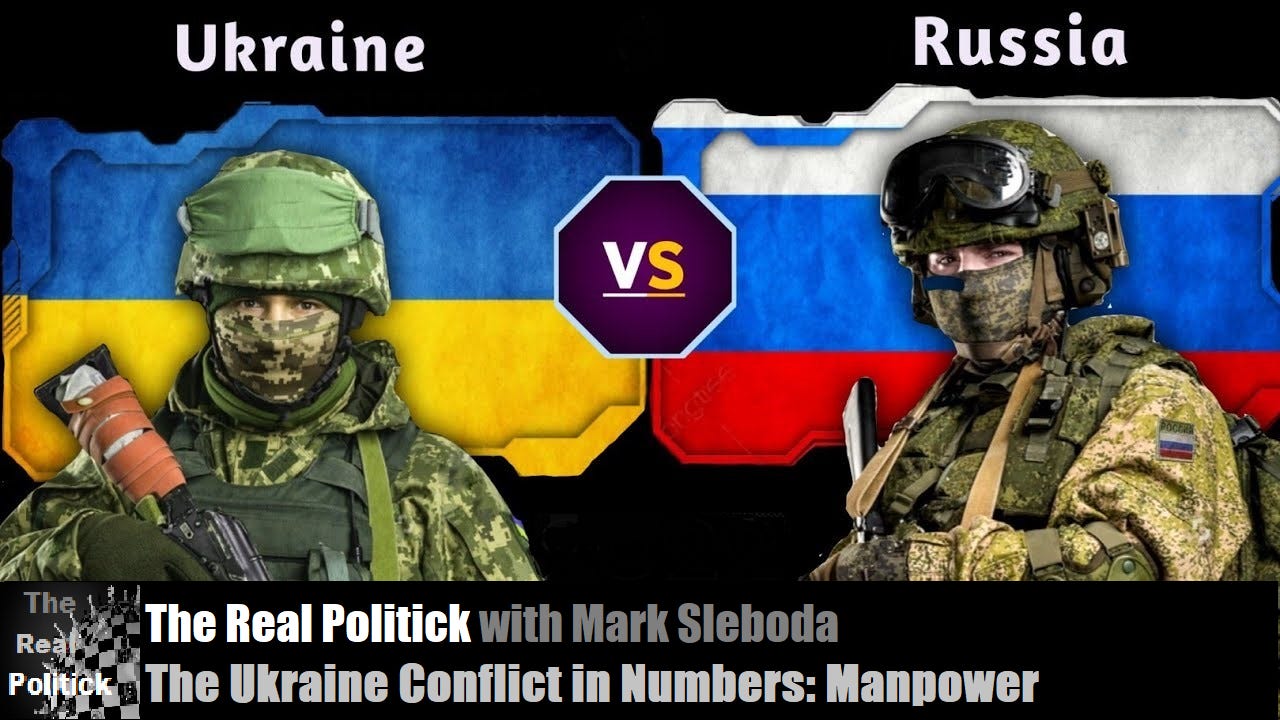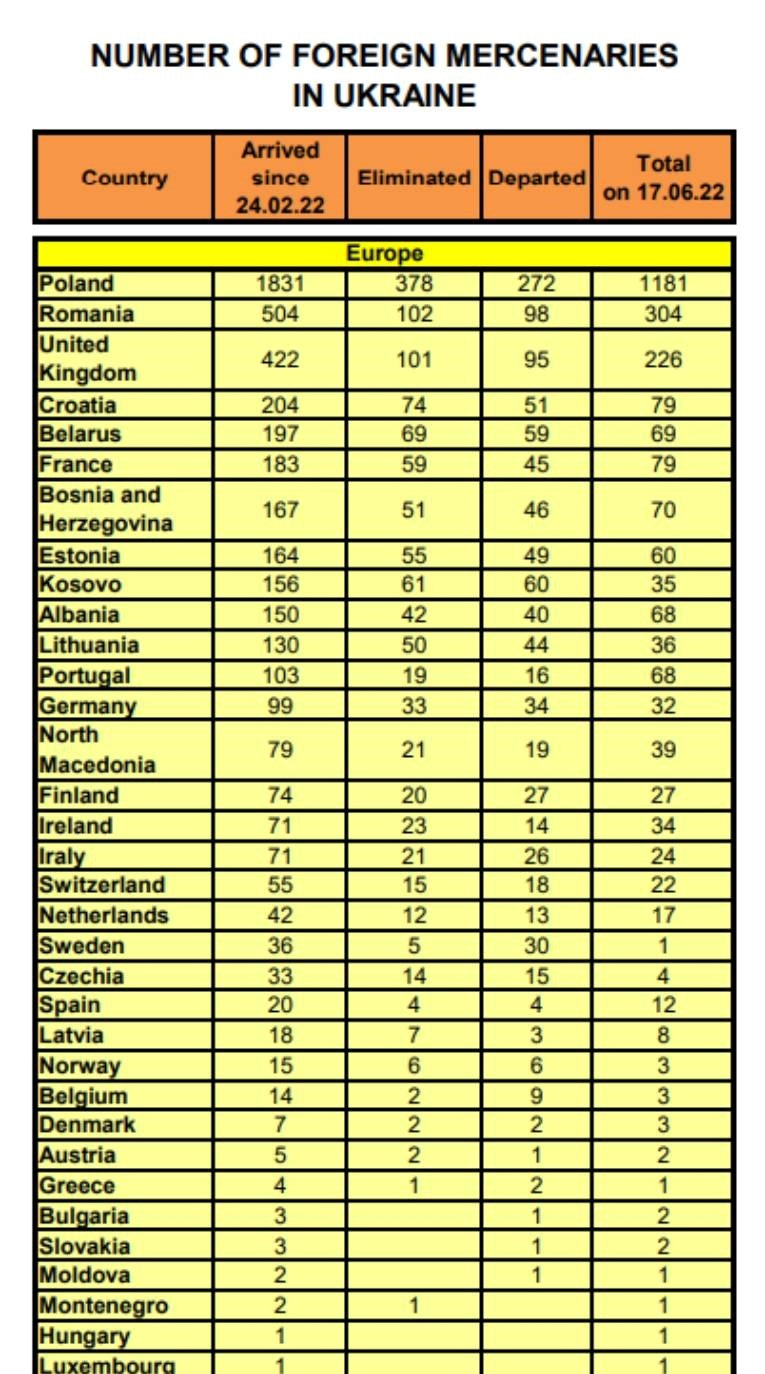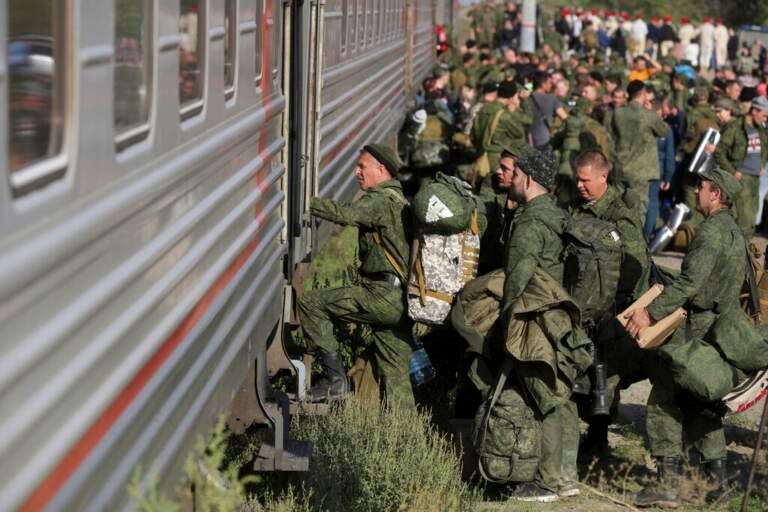As in any conflict, it is crucial to look at manpower and troop numbers to understand the dynamics of the conflict in Ukraine
The Kiev regime started the conflict in February of 2022 with approximately 250,000 strong active duty armed forces, most of them conscripts.
This was supplemented with a 60,000 strong National Guard (with many Azov NeoNazis among its ranks), 50,000 border troops, and about another 50,000 in the 50 or so discrete far right battalions.
Though the Kiev regime’s initial military forces have since been badly mauled with the Russian MoD claiming to have inflicted an excess of 100, 000 casualties,
- through volunteers, territorial defense (now regularly thrown as cannon fodder into the front), several thousand foreign mercenaries, and a regime policy of mass forced conscription in some 7 waves thus far, with male citizens forbidden from leaving the country, the Kiev regime has substantially increased their military manpower since the Russian intervention began.
They claim to now have a total of a million total troops under arms defending the regime, though realistically it is probably more like 700,000 total, though many have next to no training or previous military experience.
It seems that this is about the maximum number that the regime and its Western patrons can economically and logistically support at one time.
The Russian intervention force meanwhile has until now been self-limited by the terms of the “Special Military Operation” that the Kremlin dictated to just some 150,000 active duty professional and contracted Russian military troops.
And it has not since risen substantially above this number, though casualties have been replenished.
This has been supplemented by some 40-50 thousand former east Ukrainian Donbass militia, a couple thousand Chechen Rosgvardia National Guard, and a couple thousand Wagner security contractors.
This put the Russian intervention force at an original substantial military manpower disadvantage that has only gotten much worse in the last few months as the Kiev regime conscripted Ukrainian citizens.
However despite the assumed military logic that an attacking force should outnumber the defender by at least 3-1, the Russian intervention force was able to take some 20% of Ukrainian territory and with their heavy artillery, rocket system and aviation advantage regularly inflict from 5-1 to 10-1 kill ratio on Kiev regime forces, and that is according to Ukrainian battlefield commanders reported in the Western MSM.
With the launch of their counteroffensive strategy in late August of attacking essentially everywhere at once with quick moving diversion reconnaissance groups, mechanized infantry and mass human wave attacks, Kiev regime forces have had significant territorial success, forcing badly outnumbered Russian garrison forces in several areas to withdraw and trade territory to avoid being enveloped, though still inflicting heavy casualties on Kiev regime forces with fires while doing so.
This has finally forced the Kremlin to take several steps to remedy the manpower disadvantage that the self-limited Russian intervention force, or SMO, was operating under despite coming from a substantially more populous country.
First following local referendums, Russia has incorporated the former Ukrainian regions Donetsk, Lugansk, Kherson, and Zaporozhe into the Russian Federation.
This will enable the Russian MoD to deploy more of the 1 million strong active duty army to largely defensive roles in these territories. Let's say conservatively about 200,000 can be sent, while still maintaining minimum force requirements in other theatres and parts of the country. A stop loss policy on Russian military forces has also been enacted.
Some 300,000 rostered reservists all with military and combat experience have now also been called up in a the first wave of “partial mobilization”.
This is out of 2 million strong reserves and a further total pool of 25 million fighting age men with military experience available to be drawn on.
The Russian MoD further has announced that at least another 70,000 new military volunteers have signed up of their own accord since the mobilization was declared.
However it will take from 1-3 months for Russia to retrain, organize, equip, and deploy all these new troops onto the battlefield.
But that will bring the 2 opposing sides to about 700,000 on the Kiev regime side (minus recent heavy casualties taken during the counteroffensives) to at least 770,000 on the Russian side.
The result will be that the Kiev regime's manpower advantage, its only military advantage, will be nullified to at least parity in the near future.






